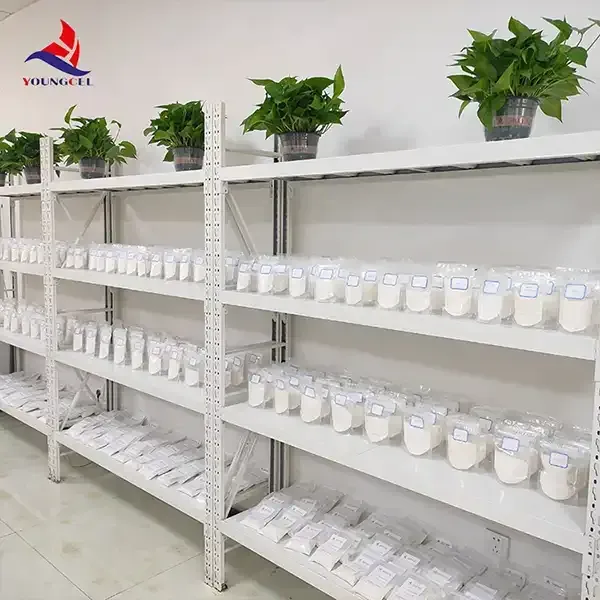The Significance of HPMC Cellulose in Modern Applications
Hydroxypropyl methylcellulose (HPMC) is a versatile cellulose derivative that has gained immense popularity across various industries due to its unique properties and functionalities. As a modified form of natural cellulose, HPMC offers several advantages that make it an integral component in pharmaceuticals, food products, cosmetics, and construction materials. This article delves into the significance of HPMC cellulose, highlighting its properties, applications, and future potential.
Properties of HPMC Cellulose HPMC is synthesized through the reaction of cellulose with propylene oxide and methyl chloride, resulting in a compound that is soluble in water and exhibits thickening, binding, and film-forming properties. Its molecular structure enables it to swell in water, forming a gel-like consistency that is beneficial in various formulations. Key properties of HPMC include
1. Water Solubility Unlike traditional cellulose, HPMC is soluble in both hot and cold water, making it ideal for applications requiring precise control of viscosity and texture. 2. Thermal Stability HPMC maintains its viscosity even when subjected to elevated temperatures, which is advantageous in processes such as cooking and sterilization. 3. Biocompatibility Being derived from natural cellulose, HPMC is non-toxic and biocompatible, making it suitable for use in pharmaceuticals and cosmetics. 4. Controlled Release Its ability to form gels allows for controlled release of active ingredients, enhancing the efficacy of various formulations.
The Significance of HPMC Cellulose in Modern Applications
1. Pharmaceuticals In the pharmaceutical industry, HPMC is used as a binder and film-former in tablet formulations, enabling controlled drug release and improving the stability of the active ingredients. Additionally, it serves as a matrix material in sustained-release formulations, providing a consistent therapeutic effect over time.
hpmc cellulose

2. Food Industry HPMC is commonly used as a food additive for its thickening and emulsifying properties. It can help improve the texture and mouthfeel of products such as sauces, soups, and dairy items. Its use in gluten-free baking allows for moisture retention and texture improvement, making it a popular choice among health-conscious consumers.
3. Cosmetics and Personal Care In cosmetics, HPMC acts as a thickener, stabilizer, and film-forming agent, enhancing the feel and performance of products such as lotions, creams, and hair gels. Its biocompatibility makes it suitable for sensitive skin, while its water-soluble nature ensures easy application and absorption.
4. Construction Materials HPMC is utilized in construction as an additive in cement and tile adhesives, improving the workability and adhesion of materials. It helps maintain moisture, allowing for better curing and overall durability of construction products.
Future Potential and Innovations The future of HPMC cellulose appears promising, driven by increasing demand for natural and sustainable alternatives in various industries. Researchers are continuously exploring innovative approaches to enhance the functionality of HPMC, including the development of new grades and formulations tailored to specific applications. The rise of the green movement and eco-friendly formulations offers new opportunities for HPMC, particularly in sectors emphasizing sustainability.
Moreover, the ongoing research into nanotechnology and drug delivery systems presents exciting prospects for HPMC. Its ability to encapsulate active ingredients may lead to advancements in targeted drug delivery, providing enhanced therapeutic effects and reduced side effects.
Conclusion In summary, hydroxypropyl methylcellulose is a functional and versatile compound with applications spanning multiple industries. Its unique properties, including water solubility, thermal stability, and biocompatibility, make it an essential ingredient in pharmaceuticals, food, cosmetics, and construction. As advancements in technology and sustainability continue to evolve, HPMC cellulose is poised to play an even more significant role in meeting the demands of modern consumers while supporting environmentally conscious practices. As such, HPMC cellulose remains a vital component in developing innovative solutions for a better future.
-
The Application and Significance of Construction RdpNewsMay.19,2025
-
Industrial Grade HpmcNewsMay.19,2025
-
Building Coating Adhesive Building Coating Adhesive HpmcNewsMay.19,2025
-
Application Of Hpmc For Detergent For Detergent In DetergentsNewsMay.19,2025
-
Application Of Hpmc Cellulose In Cement-Based MaterialsNewsMay.19,2025
-
Application Of High Quality Hpmc For Construction In The Field Of ConstructionNewsMay.19,2025




